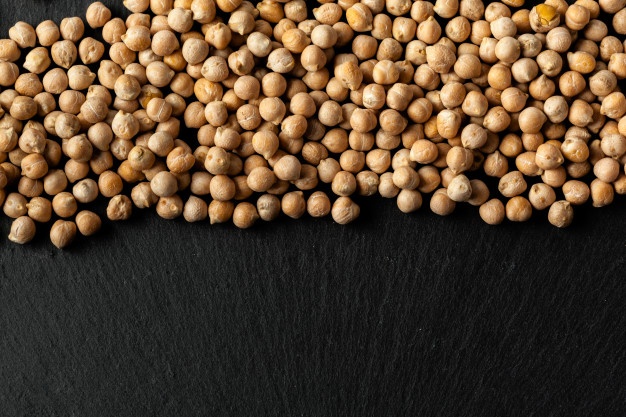IT’S A WEATHER MARKET, ANALYST SAYS

THE FORECAST IS ACTUALLY SOMEWHAT SUPPORTIVE TO GRAIN PRICES.
Changes are occurring in our world, with trade shifts starting to have an impact on grain prices, along with the typical weather we deal with.
Weather forecasts have pushed back to less precip in the next seven days, with below-normal precip now forecast for both Brazil and Argentina.
For temperatures, above-normal levels are expected in Argentina, but below normal in Brazil. That will stress crops more in Argentina especially. However, offsetting some of that bullish change over the weekend is an improving precip forecast for the eight- to 14-day in Brazil, with above-normal precip and normal temps forecast for that time period. Will it ever materialize? Often this year, the eight- to 14-day forecast was better, but it never seemed to materialize – at least, not yet. Argentina has a similar eight- to 14-day forecast as in the next seven days, warm and dry. The forecast is actually somewhat supportive to grains.
Soybean prices were lower the past few days due to concern over Chinese demand, as a severe virus outbreak in Hebei province triggered a lockdown. China hog production was down 3% last year along with hog slaughter, although the Dec. hog herd was up 10% from September at 406 million. There is talk that disease in Matto Grasso, Brazil, will drop soybean production there, with many expecting SAM soy production to be down 6 to 8 MMT from USDA’s 181 MMT guess.
Russia put a $1.65 export tax on wheat exports after March 1, giving wheat prices a solid boost in overnight trade. Traders are talking a shift of up to 6 mmt of Russian wheat export demand shifted to other origins, including the U.S. which could push CBOT futures to $7.50.
Corn demand might be 450 mb higher than USDA’s last guess, dropping carryout to 1.1 billion instead of the 1.552 USDA put out in Jan. Many traders think corn could test $5.70 to $6.00 as SAM might not be able to meet 9 MMT (give or take 1 mmt) of its current demand.
Argentina is talking about a corn export tax in their socialist country. How would you like to be a farmer there? Ukraine and Russia (former communist states) are also talking about a corn export tax. Wow!!! Socialists can think of all kinds of ways to raise money for the government, but not the farmers who produce the product in demand. So when prices could be good and give farmers a profit, the socialist government taxes it away.
But the bullishness overall of this market for U.S. producers is certainly alive and well. Technically, there really isn’t much resistance above the current market. When the market is rising at this level, it usually doesn’t stop until it is near the all-time highs. Going up, corn has resistance at $7.65, $8, and $8.44 and going down also including $5.51 and $5.70. It’s notable we’ve only stopped at these levels stated above on weekly charts once in 6,000 years!
So, we can hardly call them significant resistance points. Same for soybeans, with resistance (in uptrends) at $16.63 and $17.95; going down we have support for rebounds at $14.50 (hit twice in history), $15.28, and $16.20. Every soybean resistance going up has only been hit once in 6,000 years; only $14.50 has been hit twice going down (the others only 1 in 6,000 years). So, essentially up in these stratospheric levels, we don’t have any significant support or resistance. This makes for an extremely unstable and even less predictable market.
But one thing is certain: Selling when prices are in the stratosphere under great uncertainty is EXACTLY what Pro Ag wants to do – as it means you are selling at HUGELY profitable levels. We would also encourage at least some grain be held for the upside targets mentioned above ($16.63+ soybeans, $7.65+ corn). Note old crop has arrived at great price levels, but new crop is far from these levels. More patience is urged on the new crop at this time.
While the rest of the exporting world is practicing their policies of limiting or taxing exports on the year their farmers can make a little money, at least that hasn’t happened in the U.S. It hasn’t happened in the U.S. since Jimmy Carter’s ill-advised Russian Grain Embargo in 1980, which started an exodus of U.S. farmers into Brazil to produce soybeans. Brazil, since then, has become a soybean exporting giant – the largest in the world. Yes, government decisions do have world impacts.
The risk of loss in trading futures and/or options is substantial and each investor and/or trader must consider whether this is a suitable investment. Past performance, whether actual or indicated by simulated historical tests of strategies, is not indicative of future results. Trading advice is based on information taken from trades and statistical services and other sources that Progressive Ag Marketing believes are reliable. We do not guarantee that such information is accurate or complete and it should not be relied upon as such. Trading advice reflects our good faith judgment at a specific time and is subject to change without notice. There is no guarantee that advice we give will result in profitable trades.
Read also
Wheat in Southern Brazil Impacted by Dry Weather and Frosts
Oilseed Industry. Leaders and Strategies in the Times of a Great Change
Black Sea & Danube Region: Oilseed and Vegoil Markets Within Ongoing Transfor...
Serbia. The drought will cause extremely high losses for farmers this year
2023/24 Safrinha Corn in Brazil 91% Harvested
Write to us
Our manager will contact you soon



